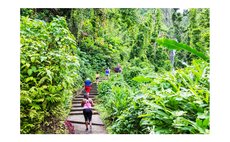What have we Learnt from the First Wave of COVID-19 Cases?

Dominica is back on the charts with confirmed cases of the dreaded virus after a hiatus of a few months. As expected, there is some public outrage at the news, propelled by fear that the hated curtailment of some fundamental rights and freedoms may well be in the making AGAIN. But probably we need not be fearful of curfews if we learnt anything useful from our handling of the 18 cases registered during the first half of this year. First of all, no lives were lost to COVID-19. All 18 confirmed cases suc-cessfully recovered and resumed their normal lives. So if there's anything to be sure about is that COVID-19 is not a vice-grip on the trachea from which there is no escape. Neither is it a death sentence. This having been said, it is not to be interpreted that the media coverage of the illness' high rate of fatality in some theatres is bloated out of reality. Prevention, mitigation and con-tainment measures are still very much the prescription to ward off the spread of the illness. So, having been subjected to an encyclopaedia of sometimes-differing scientific and layman information from the experts and the speculators respectively, is there now a body of experiential knowledge that local enterprise can rely upon to guide it through the current surge?
Lesson 1 taught by the first wave is that communication is key in the fight. Enterprise must not rely solely on the releases by public health authorities to guide their employees and patrons on the behaviours required to ensure safety while in close shop-ping environments. Occasional releases through the mass media and an abundance of high-visibility pictorial, image and text lively in-store served to inform and guide the workforce and patrons. The language of these in-store materials must be appro-priate to inform the variety of the wide spectrum of patrons entering and leaving daily. "Know the weather and the terrain!"
Lesson 2 is about compliance with the statutory interventions which may well be repeated if the second wave begins to climb. As annoying as they have been, in hindsight, we can agree that the SROs played a major role in focussing the attention and the collective energies of the population on the things which mattered most for public health. It would be remiss of the SNAPSHOT if we did not note the sometimes confusion which attended the validity, vires and release of SROs. In a democratic society, statutory instrument typically gain the force of law upon being assented to by the Head of State or upon being gazetted, and not before. But the emergency created by the pandemic resulted in a bit of confusion about what is statute, what is policy, and what is sound advice. Where it is intended that a statute be issued to enforce a Cabinet decision, political Governors must con-sider the timeframe between the broadcast of the decision and the gazetting or release of the statute. It is not uncommon for some people to ignore the broadcast until the statute is released. It was also found that threats of legal challenge were made to ascertain whether the parent or principal legislation empowered a Minister to make certain contents in an SRO. Generally, there is need for improvement and better public discourse to give better effect to and aid the needed compliance.
Lesson 3 cannot overlook the importance of using PPE, not just by employees on the job but equally by the entire populace. The old argument about the discomfort of using PPE in our humid and hot tropical climate cannot compare to the discomfort of the pain, suffering and associated costs of battling a viral infection as deadly as COVID-19. There is no comparison! While it is still very early in what may be a long battle with the virus [the Spanish Flu lasted from February 1918 to April 1920 and infected an estimated 500 million people with a 10% mortality rate], PPE contribution to survivability may reveal interesting results when the dust is settled. After all, the use of PPE and quarantine was the major assault on the 1918 pandemic.
Lesson 4 was taught by a tool we have become accustomed to but which provided expanded utility for most things in life. We are here referring to the wireless spectrum for communicating and working virtually. It now seems that some jobs may remain permanently outsourced virtually. It also looks possible that the supply chain for fresh farm outputs, including poultry products, may have been permanently altered in many ways. For many farmers, it's no longer "from farm to market" but "farm to home." COVID-19 has brought renewed interest in farming to supply local consumption and to substitute products traditionally sourced from foreign markets. Farming has permitted the absorption of labour which would otherwise exit the participation rate.




